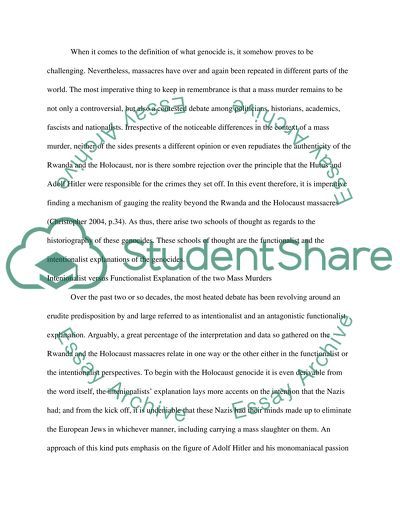Cite this document
(“Functionalist and Intentionalist Explanations of the Rwanda and Essay”, n.d.)
Retrieved from https://studentshare.org/history/1403401-functionalist-and-intentionalist-explanations-of-the-rwanda-and-holocaust-mass-murders
Retrieved from https://studentshare.org/history/1403401-functionalist-and-intentionalist-explanations-of-the-rwanda-and-holocaust-mass-murders
(Functionalist and Intentionalist Explanations of the Rwanda and Essay)
https://studentshare.org/history/1403401-functionalist-and-intentionalist-explanations-of-the-rwanda-and-holocaust-mass-murders.
https://studentshare.org/history/1403401-functionalist-and-intentionalist-explanations-of-the-rwanda-and-holocaust-mass-murders.
“Functionalist and Intentionalist Explanations of the Rwanda and Essay”, n.d. https://studentshare.org/history/1403401-functionalist-and-intentionalist-explanations-of-the-rwanda-and-holocaust-mass-murders.


